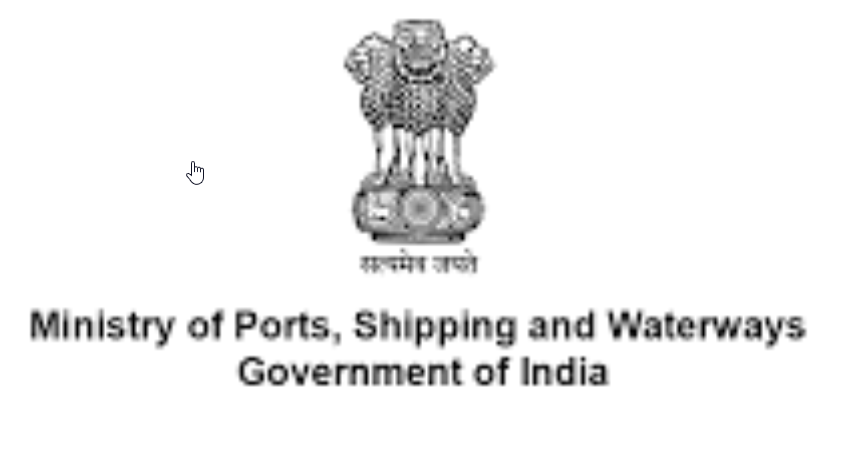Ministry of Ports, Shipping and Waterways
The Ministry of Ports, Shipping and Waterways is a branch of the Government of India responsible for formulating and administering policies related to ports, shipping, and inland waterways in the country. The ministry was formed in 2020 by merging the Ministry of Shipping and the Department of Ports. It plays a crucial role in developing and regulating the maritime sector, which is essential for India’s economic growth and international trade.
History and Formation
The Ministry of Ports, Shipping and Waterways was established on 9th November 2020 as a result of the merger of the Ministry of Shipping and the Department of Ports. The decision to create a separate ministry was taken to provide greater focus and attention to the development of the maritime sector in India. Prior to this, the Ministry of Shipping was responsible for the development of ports and shipping, while the Department of Ports was responsible for the development of inland waterways.
Organizational Structure
The Ministry of Ports, Shipping and Waterways is headed by a Cabinet Minister, who is assisted by a Minister of State. The ministry has several departments and divisions, each responsible for a specific area of the maritime sector. These include:
- Ports Wing: Responsible for the development and regulation of major and minor ports in India.
- Shipping Wing: Responsible for the development and regulation of the shipping industry, including the promotion of Indian shipping and the implementation of international maritime conventions.
- Inland Waterways Authority of India (IWAI): Responsible for the development and regulation of inland waterways in India.
- Sagarmala Development Company Limited (SDCL): A public-private partnership company responsible for the implementation of the Sagarmala program, which aims to promote port-led development in India.
Key Initiatives and Programs
The Ministry of Ports, Shipping and Waterways has launched several initiatives and programs to promote the development of the maritime sector in India. Some of the key initiatives are:
- Sagarmala Program: Launched in 2015, the Sagarmala program aims to promote port-led development in India by improving port connectivity, modernizing port infrastructure, and developing coastal economic zones. The program aims to mobilize an investment of Rs. 8 lakh crore and create 10 million jobs by 2025.
- National Maritime Development Program (NMDP): The NMDP is a comprehensive program launched by the ministry to promote the development of the maritime sector in India. The program includes initiatives such as the development of new ports, the modernization of existing ports, and the promotion of coastal shipping and inland waterways.
- Maritime India Vision 2030: Launched in 2021, the Maritime India Vision 2030 is a roadmap for the development of the maritime sector in India over the next decade. The vision aims to transform India into a leading maritime nation by promoting port-led development, enhancing regional connectivity, and developing a sustainable and environment-friendly maritime sector.
- Jal Marg Vikas Project: The Jal Marg Vikas Project is a program launched by the ministry to promote the development of inland waterways in India. The project aims to develop the National Waterway-1 (NW-1) between Haldia and Varanasi, which will enable the movement of cargo and passengers through inland waterways.
Challenges and Way Forward
Despite the various initiatives and programs launched by the Ministry of Ports, Shipping and Waterways, the maritime sector in India continues to face several challenges. Some of the key challenges are:
- Inadequate port infrastructure: Many of India’s ports are old and lack modern infrastructure, which leads to congestion and delays in cargo handling. The ministry needs to focus on modernizing and upgrading port infrastructure to improve efficiency and reduce costs.
- Lack of connectivity: Many of India’s ports lack adequate connectivity with the hinterland, which increases the cost and time of transportation. The ministry needs to focus on improving port connectivity through initiatives such as the Sagarmala program and the development of multimodal logistics parks.
- Lack of a skilled workforce: The maritime sector in India faces a shortage of skilled professionals, particularly in areas such as marine engineering and logistics. The ministry needs to focus on developing a skilled workforce through initiatives such as the establishment of maritime universities and training institutes.
- Environmental concerns: The maritime sector is a significant contributor to air and water pollution, particularly in coastal areas. The ministry needs to focus on promoting sustainable and environment-friendly practices in the sector, such as the use of cleaner fuels and the adoption of green port initiatives.
The Ministry of Ports, Shipping and Waterways plays a crucial role in developing and regulating the maritime sector in India. Through its various initiatives and programs, the ministry has made significant strides in promoting port-led development, enhancing regional connectivity, and developing a sustainable and environment-friendly maritime sector.


